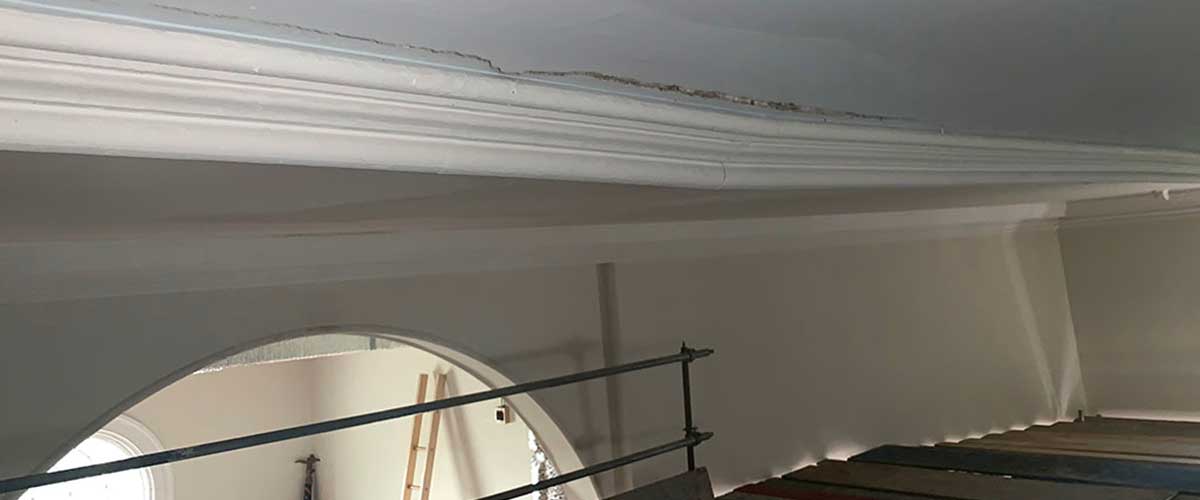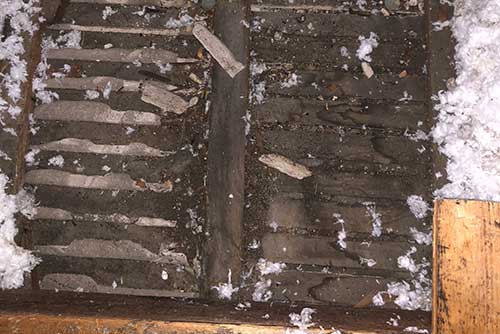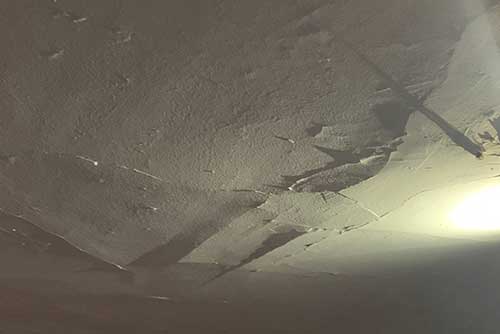How to Prepare for a Plaster Condition Assessment


With both time and frequent use, spaces can experience damage to delicate plaster surfaces. When damage becomes truly extensive in a location, or there is damaged spread throughout a building, it might be time to retain the services of a professional plaster restoration firm. Prior to any work being done, it is important to assess the areas with damage and determine the scope and cause of the documented damage prior to any work being performed. Often, most damaged plaster is the result of excessive wear from use, so it is important to ensure a plan is put in place to prevent damage to repaired plaster and preserve remaining original plaster.
Prior to hiring a professional restoration firm to perform an assessment, conduct your own condition assessment, a building’s preservation team should independently review the principle areas they are interested in having professionally restored and establish a general working budget for the project. It is always important to receive multiple bids on the project once you know the full scope of the project. Depending on the extent of the assessment findings, projects can usually be broken into smaller phases to help make funding more manageable. Moreover, it is imperative that a professional assess both the water permeability and the structural integrity of the damaged area prior to work being conducted. Damage to the exterior of the finished surface often pale in comparison to the damage under the plaster surface. While a simple visual assessment might not be able to fully diagnose what is occurring, an experienced expert eye and additional testing will yield greater insight into the plaster condition, best repair methods, and root cause of the damage.




Assessment check list:
- Committee Review: as a restoration committee (or point person) take a walk throughout the space and review key areas you see damage. Damage can be large or small, so note whatever you see. While reviewing the damage, if you can remember what caused the damage be sure to note it. Helping to identify what caused the damage (table nicked a wall, water damage from a flood 2017, damage from an earthquake, etc.) will help the professional tremendously.
- Set a General Budget: have a general number you are comfortable spending to restore key areas—you might not be able to remedy all the damage at one time. Identify which areas are most important to you. Once professionals start to bid you can adjust accordingly. Seek out project details from other, similar restorations in your area. Never settle and do not spread resources thin to accomplish everything—it will cost you more in the long run. Remember, a plaster assessment is not a project bid, so this is just a general working amount.
- Selecting Professionals: it is important to work with accredited and licensed professionals. Find several firms within the area, or firms willing to travel to your area and engage them to conduct a review. Obtain written references for these firms from both past clients and current contractors/subcontractors.
- Assessment Day: each firm may conduct the assessment a little differently. It is important to let the professionals do their job—some might do a pre-assessment review, others invite you to escort them, and some might prefer to review independently and do a post assessment debrief. All of these are fine but do be sure they understand which areas are of greatest importance before they leave. If you have had any past work done, be sure to explain what was done prior to their departure.
- Reviewing the Report: once the report has been completed you will be provided a copy of their findings—this is not a project bid, nor should it be interpreted as being the full scope. Damaged plaster usually means damage exists within the wall; thus, further work might be needed to stabilize the structure. The assessment report will usually have two parts: a report detailing general types of damage and recommended repair methods and a catalog of all the damaged within the reviewed space. Some damage might be connected, so striking smaller projects for budget purposes might not be feasible—ask the professionals to group projects wherever possible when you get to the bidding stage.
- Additional Points for Consideration:
- If walls need to be opened it might be worth reviewing upgrading electrical, HVAC, and plumbing systems simultaneously.
- Further testing might be needed to determine original color palette, plaster composition, lost design motifs, etc.
- If repaired plaster is within reach, creating a plan to prevent hands/furniture/deleterious agents from coming into contact with it might be an important step in preventing further deterioration.
Projects within a building are often not confined to one space. Older buildings experience water damage, structural shifts, and wear each taking a toll on the beauty of the finished inner space. Professional restoration coupled with scientific testing can restore a space to its original glory. Working with a cohesive team of highly recommended professionals will help keep your project on track and ensure that it is executed correctly—protecting your investment for future generations.
If you are in need of plaster restoration or repair services, please contact Canning Liturgical Arts.
